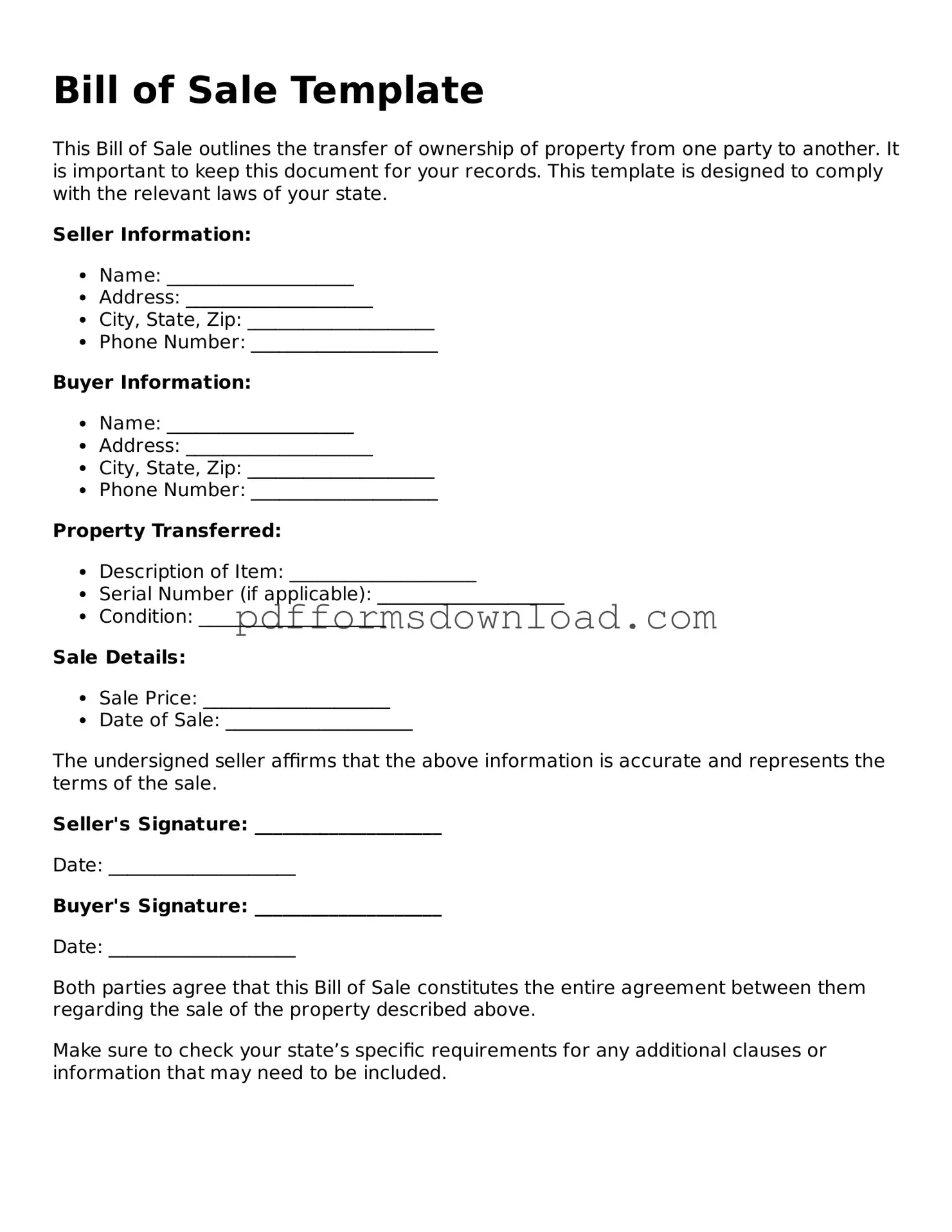What is a Bill of Sale?
A Bill of Sale is a legal document that serves as proof of the transfer of ownership of an item from one person to another. It typically includes details about the item being sold, the parties involved, and the terms of the sale. This document is commonly used for transactions involving vehicles, boats, and personal property.
When do I need a Bill of Sale?
You need a Bill of Sale whenever you sell or purchase an item of significant value. This includes vehicles, equipment, and high-value personal property. While not always legally required, having a Bill of Sale provides protection for both the buyer and the seller by documenting the transaction.
What information should be included in a Bill of Sale?
A Bill of Sale should include the following key information: the names and addresses of both the buyer and seller, a detailed description of the item being sold (including make, model, and serial number if applicable), the sale price, the date of the transaction, and any terms or conditions of the sale. Both parties should sign the document to make it valid.
Is a Bill of Sale legally binding?
Yes, a Bill of Sale is legally binding once both parties sign it. It acts as a contract, indicating that the buyer has paid for the item and the seller has transferred ownership. However, it is important to ensure that the document is properly filled out and signed to avoid any disputes later on.
Do I need to have a Bill of Sale notarized?
In most cases, a Bill of Sale does not need to be notarized to be valid. However, some states or specific transactions may require notarization for added legal protection. It is advisable to check local laws or consult with a legal professional to determine if notarization is necessary for your situation.
Can I create my own Bill of Sale?
Yes, you can create your own Bill of Sale. There are many templates available online that can help guide you. Just ensure that you include all necessary information and that both parties sign the document. Customizing a template to fit your specific transaction can also be beneficial.
What should I do with the Bill of Sale after the transaction?
After the transaction, both the buyer and seller should keep a copy of the Bill of Sale for their records. This document may be needed for future reference, especially if there are any disputes or if the buyer needs to register the item, such as a vehicle, with the state.
Can a Bill of Sale be used for a gift?
Yes, a Bill of Sale can be used for a gift, although it is typically not necessary. If you want to document the transfer of ownership for a gift, you can create a Bill of Sale that indicates no money was exchanged. This can help clarify the intent and ownership in case any questions arise later.
What happens if I lose my Bill of Sale?
If you lose your Bill of Sale, it can be challenging, especially if you need it for legal or registration purposes. If possible, try to obtain a copy from the other party involved in the transaction. If that is not an option, you may need to draft a new Bill of Sale and have both parties sign it again to reaffirm the transaction.
